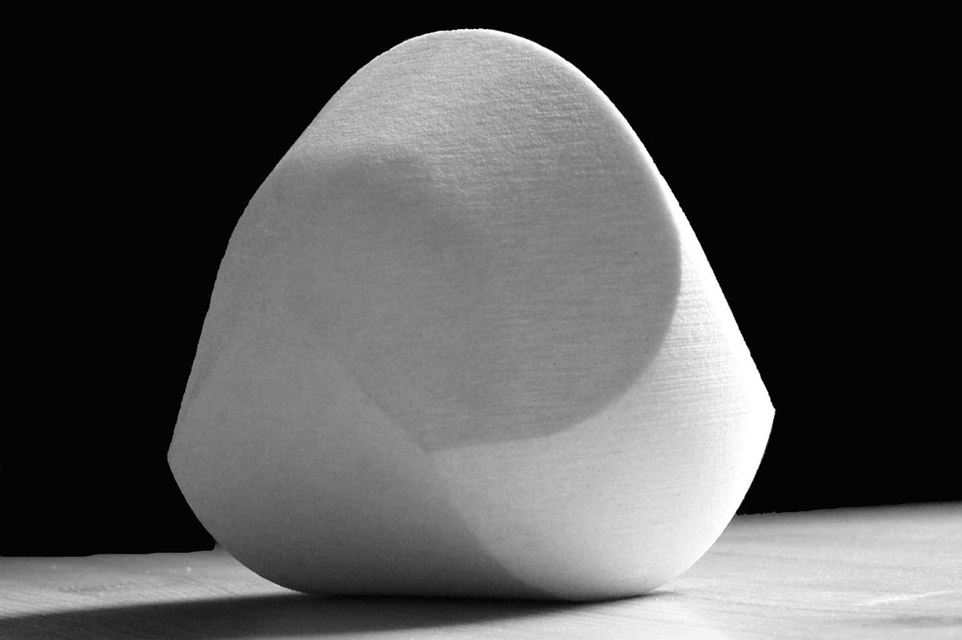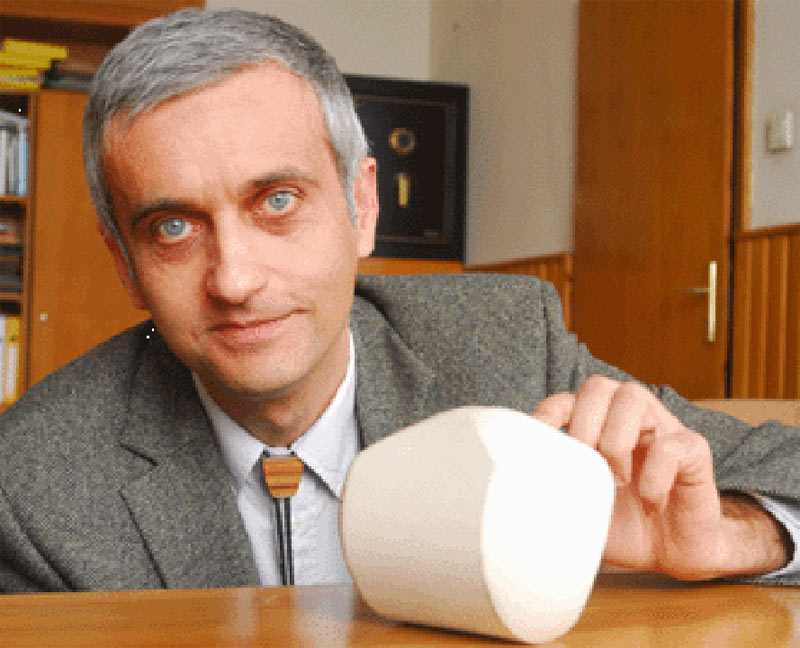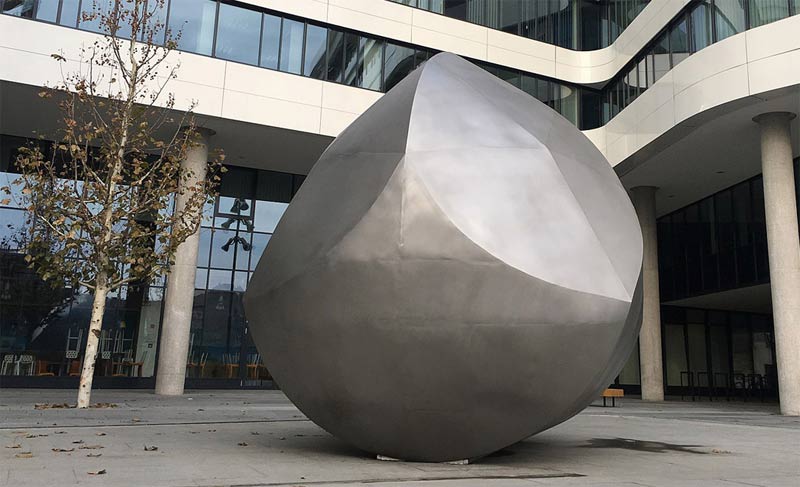gömböc

Figure 1. A gömböc in its stable positon.

Figure 2. Hungarian mathematician and engineer Gabor Domokos, best known for his 2006 discovery of the gömböc.

Figure 3. A gömböc statue in Budapest.
It's easy to make a curved object that if put down on a flat surface always comes to rest in the same position – simply weight it at one end. The superegg, which we talk about in another video, is special and entertaining because it does the trick without any kind of built-in bias: it's made of material of the same density throughout. An even more astonishing stability is displayed by a shape that's been described as the strangest object in the world. It certainly has a strange name: the gömböc, from the Hungarian for 'sphere' (because it has some sphere-like properties).
The existence of the gömböc was first conjectured in 1995 by the Russian mathematician Vladimir Arnold. It's defined to be a convex 3D homogenous object that, on a flat surface, has just one stable and one unstable point of equilibrium. In other words, if placed on a flat surface, in every position except one it will move until it's resting on its solitary stable point; the only exception is the unstable point in which it will remain unless given the slightest nudge. Proof that the gömböc isn't some mythical beast but can exist in the real world, and in many different forms, came from Hungarian mathematician and engineer Gábor Domokos (Figure 2) and his student Péter (Payter) Várkonyi in 2006.
To look at, a gömböc isn't much. It has a broadly curved base surrounded by flattish sides that rise to a curved ridge. Put it down on the curved base and, as you might expect it rocks back and forth until it comes to rest on its one stable point. If laid down on a flat side it eventually reaches the same resting point but more slowly and in a way that almost suggests it's alive. A slow back-and-forth rolling motion is followed by a temporary pause before the gömböc goes into a rapid, rolling vibration, which ends with it reaching its stable balance point and righting itself again.
Gömböcs can be purchased today from many sources but they aren't cheap and their ability to self-right consistently depends much on how carefully they're made and their composition (heavier materials tend to be more effective). The proportions of a handheld version, for example, must be accurate to within about one hundredth of a millimeter, or a tenth the thickness of a human hair, in order to work properly. The New York Times Magazine chose the gömböc as one of its 70 most interesting ideas in 2007 and further fame for the shape came a couple of years later when the gömböc appeared on BBC TV's popular quiz show QI. Host Stephen Fry demonstrated the curiosity before Gábor Domokos, who was in the audience, explained how it came about – and its connection with tortoises.
Tortoises are among the animals that can be in big trouble if they get tipped onto their backs, by accident or in a fight. The ability to self-right then becomes crucial for survival. Some tortoises and turtles, especially those with flattened shells, have long legs and necks with which they can lever themselves upright again. But those whose shells are more rounded need a different strategy. Following their breakthrough in tracking down the gömböc, Domokos and Várkonyi spent a year at the Budapest Zoo measuring and analysing the shapes of shells of different species of tortoise. Their resulting explanation of tortoise body shape and ability to self-right, in terms of gömböc geometry, while still controversial, has been accepted by some biologists.

